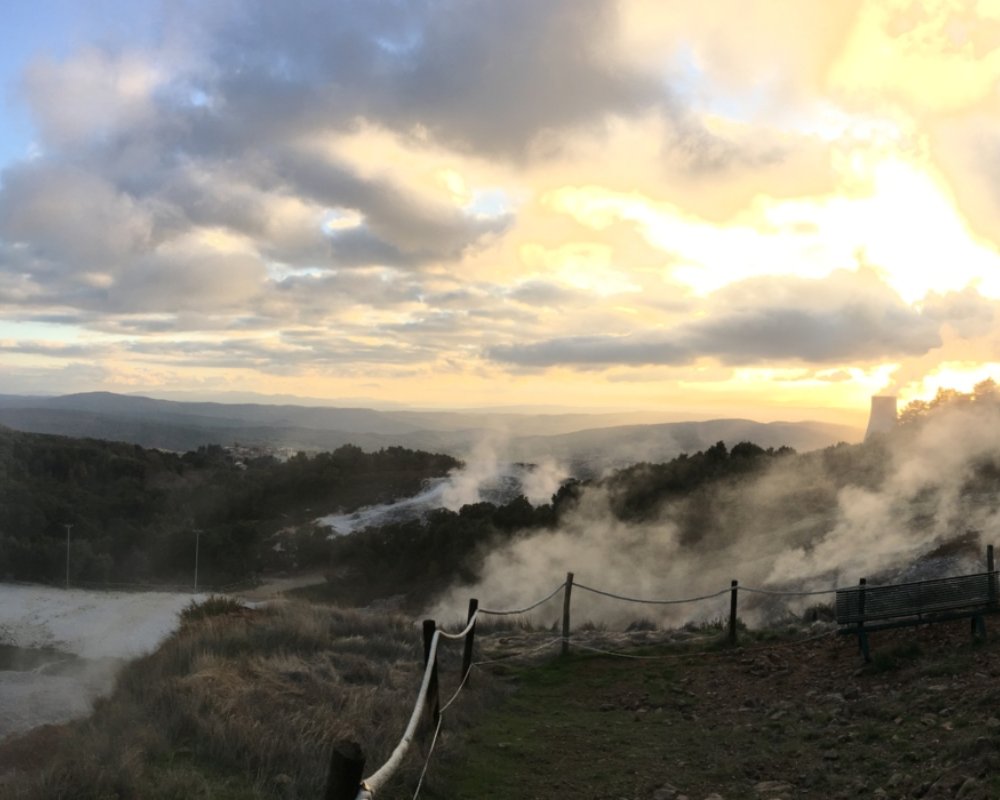
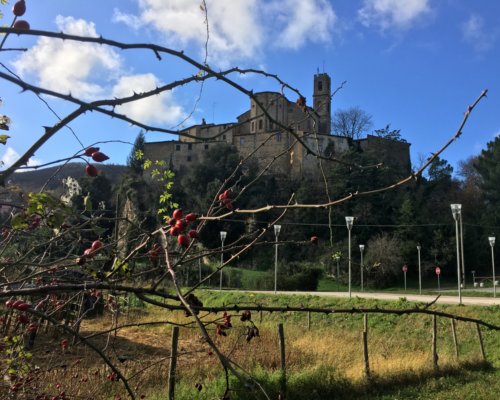

A journey through unspoiled Tuscany, in search of the hot springs beloved of the Etruscans
There is an area in Tuscany, covering the municipalities of Pomarance, Castelnuovo Val di Cecina and Monterotondo Marittimo, which is known as the Valle del Diavolo, or the Devil’s Valley. Pools, fumaroles, jets of steam and boiling springs pockmark this territory, which seems to have inspired Dante’s topography of hell in his Divine Comedy.
These haunting, almost lunar landscapes are the idea destination for an outdoors trip. You can follow trekking routes, or visit the main panoramic vantage points and the thermal pools.
We suggest some things to do and see on a car journey from Sasso Pisano to Monterotondo Marittimo, for a day in an unforgettable landscape.
Sasso Pisano is a typical Tuscan hilltown which sits in the municipality of Castelnuovo Val di Cecina. Little by little, as you near the town, the castle – the oldest settlement here – and its circuit of walls hove into view. Geothermic activity is evident at Sasso Pisano in the form of soffioni (jets of steam from the dry earth), putizze (gas emissions composed mainly of hydrogen sulphate, hence their smell of rotten eggs) and lagoni (depressions in the earth, where the geothermic waters collect unpredicatably).
In the town centre you can visit the Etruscan and Roman Museum, known otherwise as the Antiquarium. This is home to a number of interesting finds from the archaeological area called “Il Bagnone”, including a statue of Minerva, made from lead and tin, coins, a terracotta vase, and rooftiles with a typical Etruscan indentation, and much more.
Leaving the town and walking around the cemetery, you come across an ancient laundry, where water bubbles up into a tub at a temperature of 36°C. But this is only one of the many hot springs across the Sasso Pisano territory. The Biolago, for example, is a bathing complex designed with health and relaxation in mind, to which end it comprises a calidarium and a hydromassage, a tepidarium and a phytodepurated lake at a natural temperature. The Biolago is fed by cold waters which are heated from a central geothermic source.
The next leg of the journey takes you the Etrusco-Roman bath complex. Around yet more natural springs, you can admire the Etruscan spas that date back to the late Hellenistic period. The remains of a colonnade are still visible, and two bath constructions with pools and a number of vestibules, which probably served to welcome visitors and pilgrims. Some tiles have been found with the Etruscan spural huflunas inscribed on them, which confirms that the baths were a public destination.
Sasso Pisano is a typical Tuscan hilltown which sits in the municipality of Castelnuovo Val di Cecina. Little by little, as you near the town, the castle – the oldest settlement here – and its circuit of walls hove into view. Geothermic activity is evident at Sasso Pisano in the form of soffioni (jets of steam from the dry earth), putizze (gas emissions composed mainly of hydrogen sulphate, hence their smell of rotten eggs) and lagoni (depressions in the earth, where the geothermic waters collect unpredicatably).
In the town centre you can visit the Etruscan and Roman Museum, known otherwise as the Antiquarium. This is home to a number of interesting finds from the archaeological area called “Il Bagnone”, including a statue of Minerva, made from lead and tin, coins, a terracotta vase, and rooftiles with a typical Etruscan indentation, and much more.
Leaving the town and walking around the cemetery, you come across an ancient laundry, where water bubbles up into a tub at a temperature of 36°C. But this is only one of the many hot springs across the Sasso Pisano territory. The Biolago, for example, is a bathing complex designed with health and relaxation in mind, to which end it comprises a calidarium and a hydromassage, a tepidarium and a phytodepurated lake at a natural temperature. The Biolago is fed by cold waters which are heated from a central geothermic source.
The next leg of the journey takes you the Etrusco-Roman bath complex. Around yet more natural springs, you can admire the Etruscan spas that date back to the late Hellenistic period. The remains of a colonnade are still visible, and two bath constructions with pools and a number of vestibules, which probably served to welcome visitors and pilgrims. Some tiles have been found with the Etruscan spural huflunas inscribed on them, which confirms that the baths were a public destination.
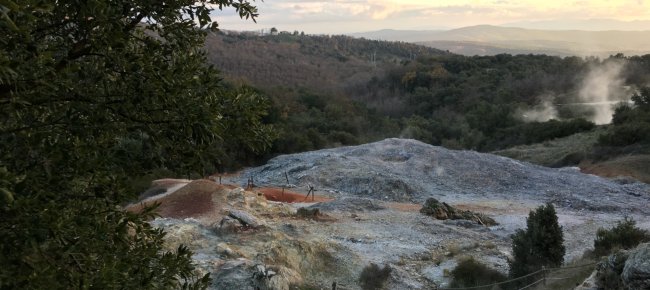
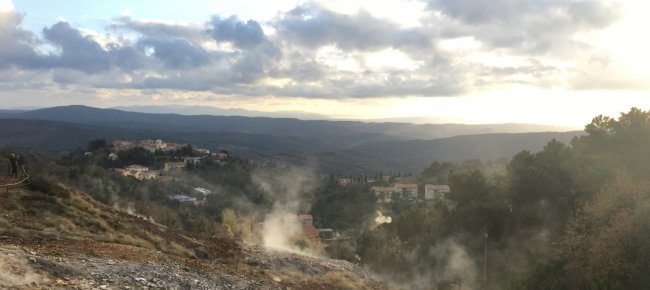

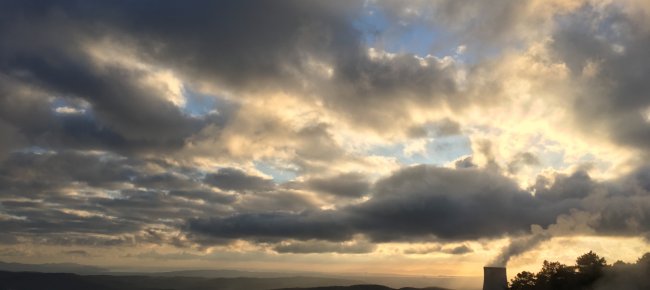
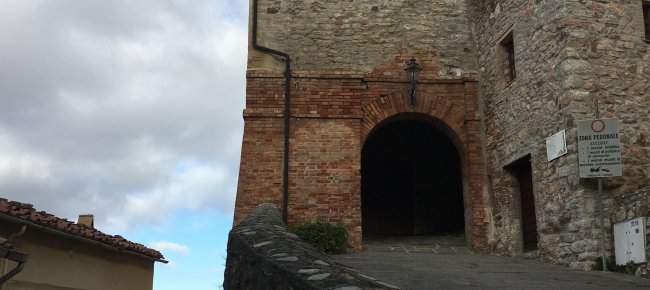
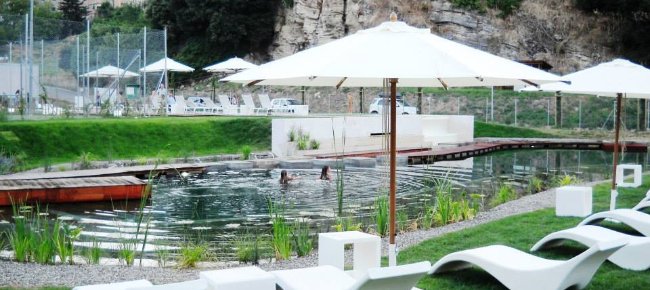
Not far from the centre of Monterotondo Marittimo you find one of the most exciting parks in Italy: the Biancane. This white landscape, embedded in the Colline Metallifere Grossetane National Park, is a World Heritage Site and is typified by the geothermic activity that diversifies into the aforementioned soffioni, putizze, vapour columns and fumaroles.
If you decide to venture into the Biancane park, the symbol of Monterotondo Marittimo and of the energy that it derives from the bowels of the earth, you can follow one of many footpaths that cross the area concerned. Between gases, craters and view-giving terraces (on clear days, you can see a wide stretch of the Tyrrhenian coast, from Punta Ala to the Isle of Elba), you will pick out the Lagone Naturale (Natural Lake), with a geyser erupting at its centre. The water here reaches temperatures of up to 150°C.
In the same park you will also encounter the Lagone Cerchiato (encircled lake), so called because in the past – the late medieval period, in fact – the boiling waters were used to bend the branches of the chestnut trees and the hooping of barrels. The Etruscans loved these waters, and maintained that they ameliorated skin diseases, liver and kidney problems. Even today, the boric acid is used in the pharmaceutical industry.
Another point of interest is the MUBIA, the Biancane Geomuseum in Monterotondo Marittimo. Guests can savour the excitement of a virtual tour down into the depths of the earth, in search of the geothermic secrets. A GeoNave, indeed, takes you down to a depth of 7km below the surface and lets you admire the subsoil miracles.
Not far from the centre of Monterotondo Marittimo you find one of the most exciting parks in Italy: the Biancane. This white landscape, embedded in the Colline Metallifere Grossetane National Park, is a World Heritage Site and is typified by the geothermic activity that diversifies into the aforementioned soffioni, putizze, vapour columns and fumaroles.
If you decide to venture into the Biancane park, the symbol of Monterotondo Marittimo and of the energy that it derives from the bowels of the earth, you can follow one of many footpaths that cross the area concerned. Between gases, craters and view-giving terraces (on clear days, you can see a wide stretch of the Tyrrhenian coast, from Punta Ala to the Isle of Elba), you will pick out the Lagone Naturale (Natural Lake), with a geyser erupting at its centre. The water here reaches temperatures of up to 150°C.
In the same park you will also encounter the Lagone Cerchiato (encircled lake), so called because in the past – the late medieval period, in fact – the boiling waters were used to bend the branches of the chestnut trees and the hooping of barrels. The Etruscans loved these waters, and maintained that they ameliorated skin diseases, liver and kidney problems. Even today, the boric acid is used in the pharmaceutical industry.
Another point of interest is the MUBIA, the Biancane Geomuseum in Monterotondo Marittimo. Guests can savour the excitement of a virtual tour down into the depths of the earth, in search of the geothermic secrets. A GeoNave, indeed, takes you down to a depth of 7km below the surface and lets you admire the subsoil miracles.